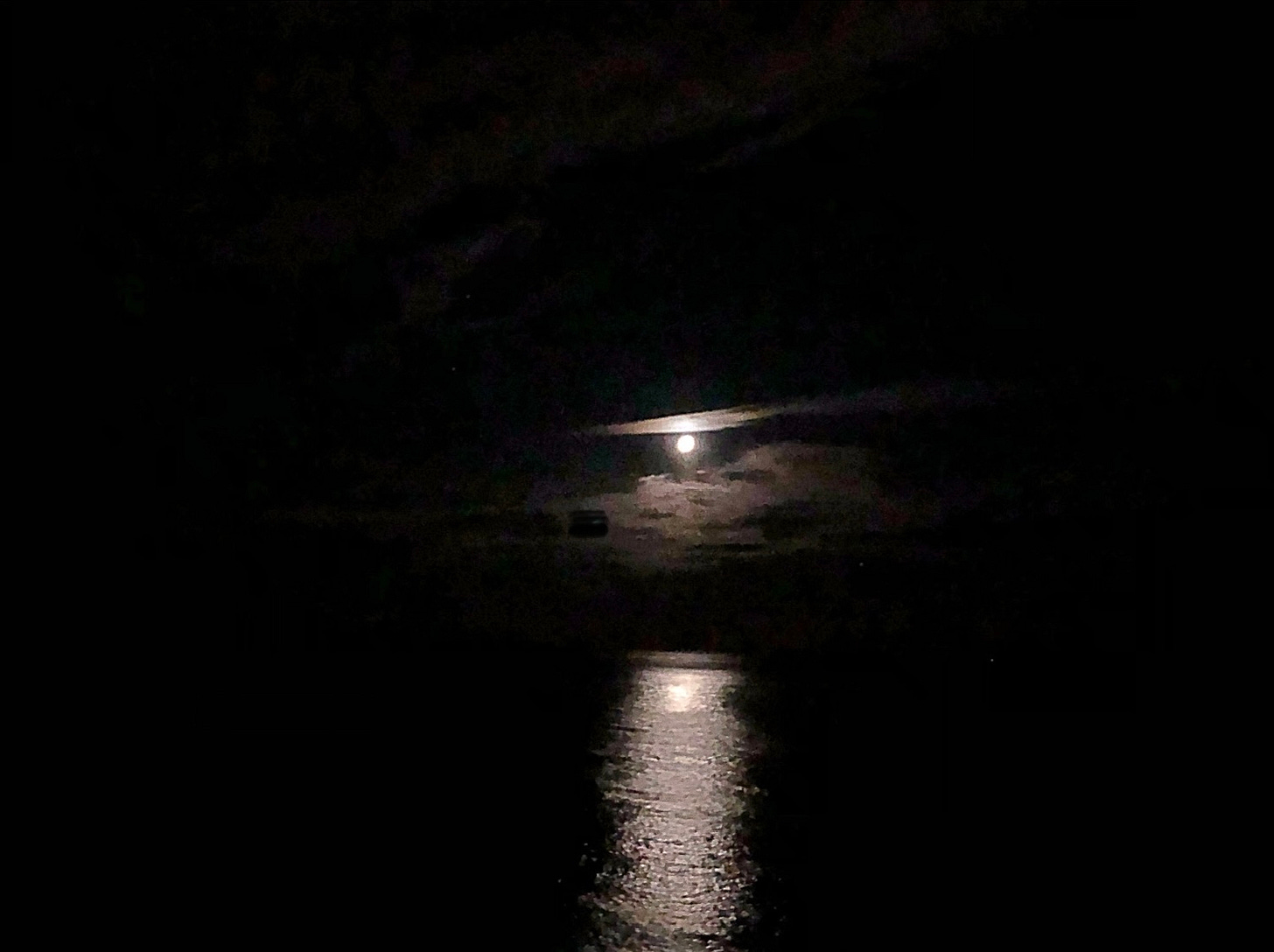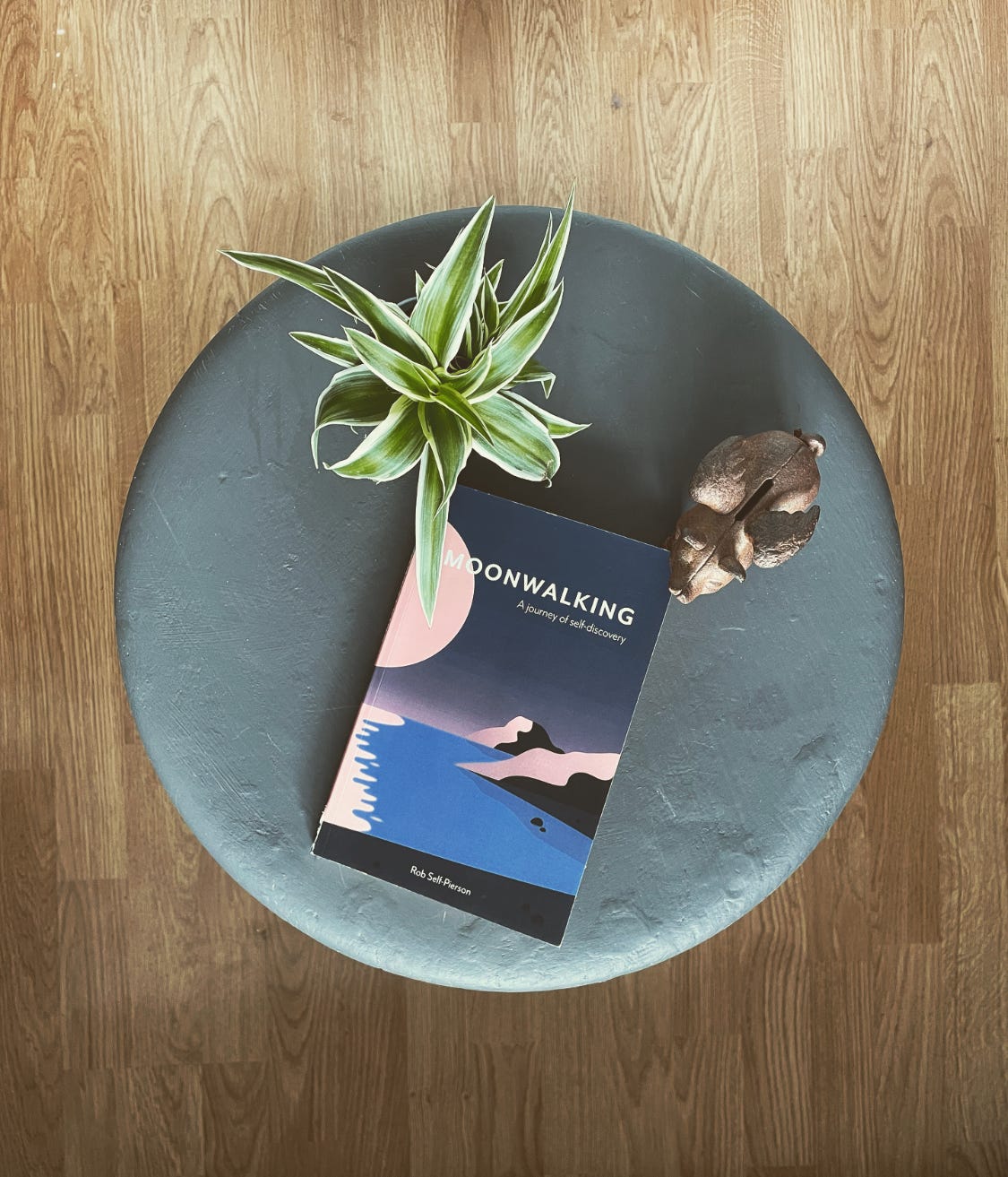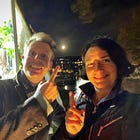Walking beneath the full moon
Lift your head, look up and howl
Hello again,
Thank you to everyone who replied to my last edition to share experiences of walking, writing and finding specks of wilderness in their local park. I love hearing your thoughts and you’re always welcome to join the conversation with other readers by commenting on these posts.
I’ve used my walks in nature this summer to help me gather my thoughts, figure things out and make plans. You could say, I’m seeking something. I’m on the hunt.
The last time I went on the hunt for something in nature was many years ago during a series of scuba dives on the Mesoamerican Reef in the Caribbean. There’s a spectacular event that happens once a year – mass coral spawning – when different colonies of the same coral species release their gametes (eggs and sperm) into the water at the same time. The event is triggered by the lunar cycle and water temperatures, and the best way to see it is to time your dive very carefully by heading out after sunset, a few days after the full moon.
Reader, I did not see the coral spawning.
Even though we went out after sunset for several days following the full moon, I did not get to see this magical event in person. Perhaps that was a blessing disguise – swimming in eggs and sperm?!
In the meantime, there are plenty of things to seek out in nature on a walk. And in this edition we go in search of the full moon.
Walking
There’s something magical about a night sky, lit bright by the full moon. But how often do we really take the time to pause, look up, and enjoy it?
Historically, walking at night has been pretty popular with writers and thinkers alike. Poets like John Clare and William Wordsworth were known to take a starlit stroll. And Charles Dickens is famous for his nocturnal walks around London, which he took to try and cure his insomnia.
Fellow copywriter, Rob Self-Pierson, is also no stranger to walking after dark. In 2009, he set off to walk the British Isles by the light of the full moon. Ten years later, he wrote about it in his book Moonwalking. Part travel writing, part memoir, it’s a witty and vulnerable account of losing the love of your life then trying to find yourself again by walking in weird and wonderful places, and meeting new people, under the full moon. You can learn more about Rob and his walking and writing in our interview.
In the meantime, inspired by nocturnal writers, old and new, I invite you to venture out for a short stroll after dark, beneath the light of a full moon. You don’t need to go far. Simply walking around a garden or a small park is enough – the goal is to be able to get outside and see the moon. But wherever you decide to walk, you’ll need to plan ahead to get the most from this and do it safely.1
Check the moon phases for your area of the world to find out when each full moon is happening throughout the year.
Check the weather forecast – a full moon walk is best when it’s clear and dry.
Plan a safe route for your walk – preferably one you’re familiar with, that’s on level, well-trodden or clearly marked trails you’ve walked in daylight – a forest or mountain might not be the best choice here. You don’t even need to go far. If you have a garden, or access to another outdoor space that’s safe and gives you a clear view of the sky, try moonwalking there instead.
Take someone with you, or go in a small group, unless you know the route well (and are braver than me).
Carry a torch – a headlamp is great for walks and keeps your hands free. But if you want to see any wildlife, it’s best to stop walking and switch it off so you can look around, as the light from it will deter any nocturnal animals.
Allow your eyes to adjust to the dark – if, or when, you decide to switch off your torch, give your eyes time to adjust. I think this is especially important if you live in a light-polluted area and rarely get to experience a truly dark night.
Walk quietly, so you can pay attention to the sounds around you – noise seems to travel further at night and people’s chatter can drown out the sound of owls or the scurrying of creatures going about their nocturnal business.
Charge your phone and keep it handy, in case of any emergencies. If you’re taking a longer walk, carry a backup charger for it.
Have a navigation app on your phone – and learn how to use it before your walk. Not only are they helpful for planning and mapping routes, some of them allow you to track your route as you walk, so you can always see where you’ve been and follow it back again.
Wear the right clothes and footwear – walking when you feel cold or if you get wet is miserable, so carry extra layers and waterproofs.
Take some snacks and a flask with a hot drink – particularly useful for longer walks, less essential if you’re walking in your garden and have fast access to your kitchen and the hot chocolate.
If, like me, you live in a city, then light and air pollution drowns out the stars and the moon. So the best chance we have of seeing the full moon is out in nature on a cloudless night.
That’s not to say you won’t see the full moon if you live in a town or city, but I think the experience can more be more magical when you’re somewhere remote and quiet. And moonlit nature walks offer the chance of experiencing the nocturnal wildlife that we’d never see during the day. Which means that by walking the same place at different times, we can have two very different experiences.
I also think there’s something pretty special about taking a walk in conditions that only happen occasionally or at intervals. You can take a night walk whenever you fancy, but a full moon walk is rarer, so I think it’s a good opportunity to slow down, enjoy it and pay attention to the experience.
Writing
Let’s follow up our moon walk with some reflective writing based on the theme of searching or seeking, using these writing prompts:
What are you seeking?
Why are you seeking it?
How do you intend to find it?
What will you do once you’ve found it?
Reflective writing like this helps you to focus on something you’re thinking about and how it makes you feel, so you can consider what you might do as a result. It’s fairly easy but because of it’s deeply personal approach, it can sometimes bring up thoughts and feelings we might not have expected or want to share with others. And that’s perfectly okay. What you write in your notebook belongs to you and it’s your choice if you want to share some, or all, of it with other people, or keep it just for you.
As always, I’d love to hear how you find the walking and writing, so feel free to add a comment.
Happy walking and writing until next time,
Sarah
More from The Writer’s Walk
If you enjoyed this edition, check out the interview with moonwalker Rob Self-Pierson.
Support The Writer’s Walk
The Writer’s Walk is free to read but not free to produce. If you enjoy the posts, please consider leaving a tip on Ko-fi to help me cover the costs.
Liking, commenting on and sharing this post is also a great way to show your support. Thank you.
Make sure you approach any night walk safely. Even a familiar place can look and feel different in the dark. If you don’t feel confident trying it alone, go with someone who’s done the walk before, or look for walking groups near you that organise, and lead, night walks. You should also consider taking a navigation skills course – one that covers map reading, compass use, and day and nighttime navigation skills.




